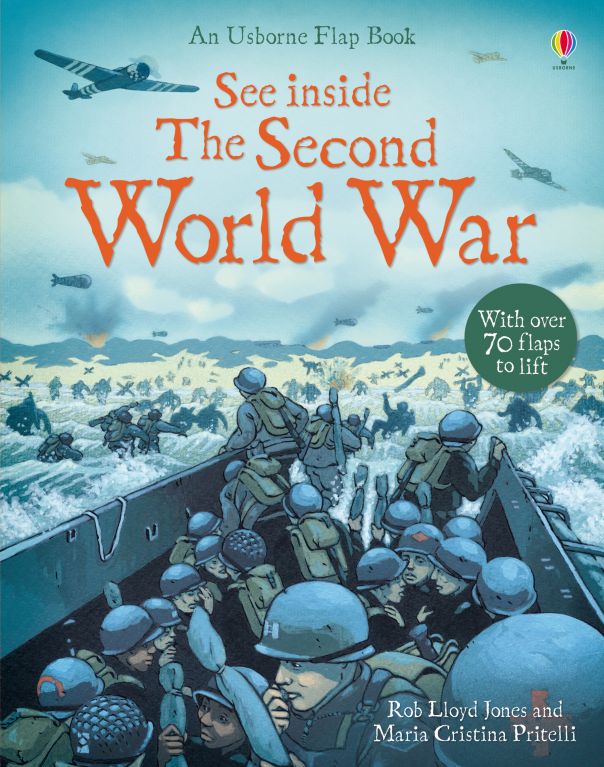You've added:
See Inside The Second World WarSee Inside The Second World War
Age 6+
Buy from:
From tanks rumbling across battlefields to submarines, blitzed cities and D-Day, this extraordinary flap book takes young readers right into the action of the Second World War.
With vivid illustrations and fascinating facts to discover, each flap reveals something new.
Chapters in this book include:
- First strike
- Atlantic terror
- War in the sky
- Blitzed cities
- Firepower
- In the Pacific
- D-Day
- Final months
- Extent:
- 16 pages
- Dimensions:
- 281.4 x 223.4mm
- Board ISBN:
- 9781409523291
- Key Stage:
- KS1
- Publication Date:
- June 2011
- Work Reference:
- 02466
Chapters in this book include:
- First strike
- Atlantic terror
- War in the sky
- Blitzed cities
- Firepower
- In the Pacific
- D-Day
- Final months
View series: See Inside
View series: How It Works
A great overview of the whole conflict... a great book for primary school kids - but also contains enough colourful snippets and insights to appeal to older children, too.
See inside the Second World War is a child-friendly but extremely detailed account of the run-up to the Normandy Landings. There are over 60 flaps for busy and curious little fingers to open and explore... The See inside series is such a fantastic way to engage children with history and fact-finding.
Quicklinks
Visit Usborne Quicklinks for links to websites with videos, newsreels and facts about the Second World War, the Blitz and D-Day, and photos of the celebrations at the end of the war.


